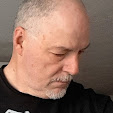These days, Chuck Mangione is best-known (if he's known at all) for his scoring and occasional self-mocking appearances on King Of The Hill. But back in the day, friends, this elfin, beardy man in his weird Amish hat was a genuine hitmaker—and on the flugelhorn, no less. The last gasp of jazz as a truly popular music, or The Kenny G. Before Kenny G.? Let's investigate, shall we?
It turns out ol' Chuck is a Rochester native (his keyboardist brother Gap still lives and gigs in the Flower City), and is something of a local legend. His biggest hit, "Feels So Good," justifies that legend from a purely compositional standpoint: Listened to without prejudice, it's a flat-out gorgeous tune—soaring and weaving, instantly memorable, simple enough to whistle but unfolding through its three sections with a pleasing intricacy in the changes. Kenny will never write a tune this good.
The band's pretty hot, too—drums, electric guitars, Rhodes, funky bass, and alto sax: they're listening to each other, and having fun. But Chuck can't seem to get out of his own way, and allows himself precious little fun: the album version of "Feels So Good" is nearly ten minutes long, and outstays its welcome.
There are six full choruses, four of which simply state the theme in its entirety: Chuck plays it twice for starters (including a horn-guitar intro in free time), hands it off to the guitarist, then allows a mere two choruses of solos—the big, honking alto rushing off for parts unknown (sounding impatient—at four-and-a-half minutes in, no one has yet done anything that could be categorized as improvisation) and a corker from the guitar—tasteful, imaginative, and impeccably played. Then we're back to Chuck for the wrap-up—and finally, a vamp, Chuck trading fours with the sax over a I-VIm-IV-V two-step until the fadeout. It's the only time on the side when he cuts loose, and it literally only lasts a minute.
There's some interesting stuff going on here, musically—the guitars drenched in 70s phasing effects (recalling the mighty "I Am The Black Gold Of The Sun"), the long pseudo-Latin headfake of a vamp, the contrast of the R&B-style sax with the more bebop influence in the guitar, the nod to Miles in the breathy tone of Chuck's intro. But overall, the album version of "Feels So Good" is the sound of one idea being beaten slowly to death.
But of course this isn't the version I remember hearing when I was a kid. The pop-radio edit was a different beast, lean and nimble—skipping the long solo intro, truncating the band's opening vamp, and eliminating at least one chorus: if I recall correctly, the two guitar solos were spliced together, so that the guitar started off playing the melody and shifted gears halfway through. The end result was tighter—short enough to fit on a 45 RPM single, perfect for pop radio—but also, ironically, more in the classic jazz structure of head-multiple improvs-recap.
Musicians in pre-CD days often bitched about how their songs were trimmed for airplay—Billy Joel, in an early lyric, snarled that he spent years writing the perfect song, but "they cut it down to 3:05"—but the smartest of them will admit that sometimes it works. My opinion of Ray Manzarek skyrocketed when I heard him tell the story of how producer Paul Rothchild did a drastic cut-and-paste (mostly cut) edit of "Light My Fire" for pop radio—without consent of The Doors. After their initial tantrums, Rothchild persuaded the group to listen to the remix as if hearing the song for the first time—and all of them were forced to concede that it was a damned fine pop song.
The album and single versions of "Light My Fire" are two different songs, Manzarek says—one an eight-minute, exploratory rock epic with a Coltrane fixation, the other a two-and-a-half minute teen-pop hookfest. Neither version is "definitive," and which version Manzarek himself prefers depends upon his mood at the time.
Radio: the Reader's Digest of pop.
Remixers: its Strunk and White.
Or something.

No comments:
Post a Comment